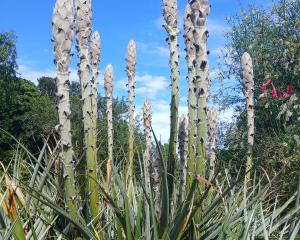
It has taken me years to appreciate Pieris, a group of evergreens often referred to as lily-of-the-valley shrub, Japanese pieris or, in North America, andromeda.

The seven species are from the Northern Hemisphere and are part of the heath family (Ericaceae), which means Pieris need acid soil to do well.

What tended to put me off these shrubs was the fiery colour of new foliage, which seemed at odds with the flowers, especially the pink varieties.
I can’t use that argument any longer, as I’ve learned that some varieties have less intensely coloured fresh growth. Notable are Sarabande, Pink Delight, Purity and Temple Bells, whose young bronze foliage turns green as leaves age. In some, depending where they are grown, the bronze tones may be absent.

In nature, sizes vary, with P. japonica reaching 3m, P. formosa and P. formosa var. forrestii growing to 4m.
Cultivated varieties have a much greater range of heights. Among the shorties are Sarabande (90cm), Christmas Cheer, Temple Bells, Summer Wine, Dorothy Wyckoff and variegated Little Heath (1m), while intermediate varieties include Pink Delight (1.5m) and Valley Valentine (1.5m). Most of these spread almost as far as their height.

Pieris are generally slow growing, so — unless you can track down an expensive, large-grade plant — they are not a quick fix where something tall is needed in a hurry. Scarlet O’Hara is sometimes recommended for tall hedging, somewhat surprising, given its rather sluggish growth, so it definitely wouldn’t be my choice.
Although they flower in spring, Pieris buds start forming long before then, sitting over winter in much the same way as those of rhododendrons and magnolias. Because some varieties, such as Dorothy Wyckoff, have deep pink buds in winter, Pieris can give a touch of colour when nothing much else is around.

Neglected bushes can be pruned hard, chopping back by at least a third to reshape and rejuvenate them and giving them a feed of compost to cheer them up. They are unlikely to flower the next season, but the bright new growth should be adequate compensation.
Overall, these are easy-care shrubs, needing little attention apart from an annual trim after flowering to keep the bushes tidy. Why did I shun them for so long?












